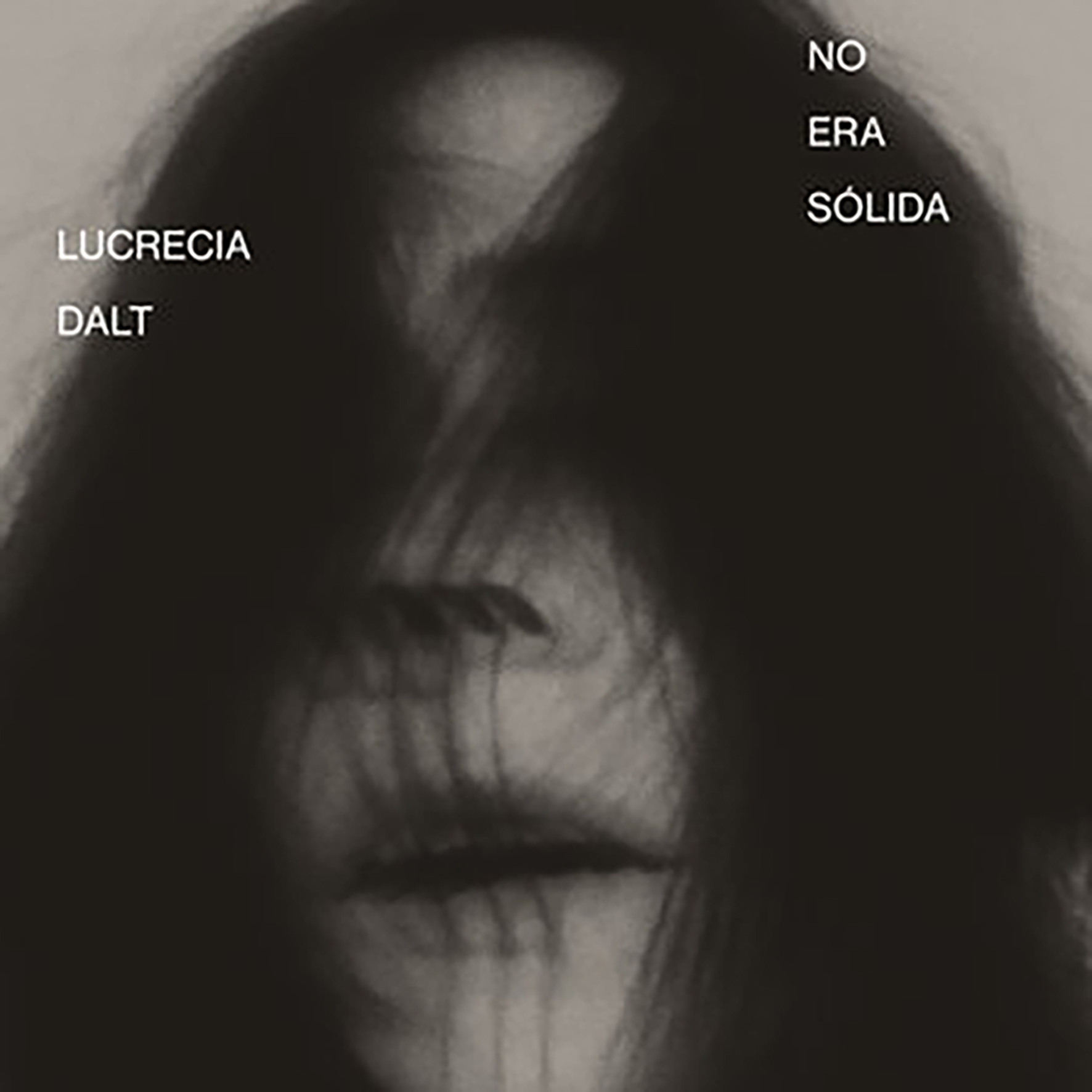Lucrecia Dalt, "No era sólida"
 With 2018's Anticlines, this Berlin-based artist established herself as one of the more adventurous and unique composers to surface in the experimental music scene in recent years and I am pleased to report that this follow-up burrows even deeper into the oft-fascinating rabbit hole of its predecessor. On a conceptual level, that deepening manifests itself in No era sólida’s deeply unusual themes, as the album is billed as a "suspended auditory illusion" that "embraces the possibilities of possession." Thankfully, the possession in this case is not of the demonic variety, as Dalt instead envisions the album as a sort of interrogation room where she interacts with an invented character named Lia. If Dalt were a lesser artist, such a premise would likely send me running in the other direction, but she executes it in such a subtle and abstract way that listening to No era sólida feels akin to unexpectedly finding myself in Twin Peaks' "red room": everything familiar is unrecognizably transformed into something disconcertingly alien and enigmatic. While the rare songs that blur into pop-like territory (such as "Ser boca") are generally the album's strongest moments, the entirety of No era sólida casts an impressively unique and haunting spell.
With 2018's Anticlines, this Berlin-based artist established herself as one of the more adventurous and unique composers to surface in the experimental music scene in recent years and I am pleased to report that this follow-up burrows even deeper into the oft-fascinating rabbit hole of its predecessor. On a conceptual level, that deepening manifests itself in No era sólida’s deeply unusual themes, as the album is billed as a "suspended auditory illusion" that "embraces the possibilities of possession." Thankfully, the possession in this case is not of the demonic variety, as Dalt instead envisions the album as a sort of interrogation room where she interacts with an invented character named Lia. If Dalt were a lesser artist, such a premise would likely send me running in the other direction, but she executes it in such a subtle and abstract way that listening to No era sólida feels akin to unexpectedly finding myself in Twin Peaks' "red room": everything familiar is unrecognizably transformed into something disconcertingly alien and enigmatic. While the rare songs that blur into pop-like territory (such as "Ser boca") are generally the album's strongest moments, the entirety of No era sólida casts an impressively unique and haunting spell.
The first time I heard No era sólida, I was amusingly reminded of the pivotal scene in 1997's Air Bud in which a referee announces that there is nothing in the rule book that states that dogs cannot play basketball.Thankfully, any similarities between the Air Bud franchise and Dalt's work begin and end there, but there is definitely something striking about how effortlessly she disregards and circumvents convention in both her approach to songwriting and how she wields the various tools in her starkly minimal palette.While Dalt is far from the first experimentalist to approach music in an unique way, her occasional proximity to pop music greatly heightens the disorientating effect of her innovations.In essence, she achieves the musical analogue of the "uncanny valley" effect.My favorite piece on the album, "Ser boca," is the most mesmerizing example of this phenomenon: all the expected elements of a catchy song are arguably in place (a great groove, a strong hook, a vocal melody, etc.), yet there is something profoundly "off" about absolutely all of them.The beat is hollow and sluggish, the hook feels hazy and stuck in an obsessively repeating loop, and the main vocal melody is intertwined with something that resembles distracted ululating.And yet it is great both because of and in spite of all that.In this case, the wordless warbling sounds seem to originate from a synthesizer rather than Dalt's own vocal cords, but one of her stated intentions was to "channel a Surrealist's automatism" to dissolve "language into an evocative collection of glossolalia."In that regard, No era sólida is a resounding success, as several of the other pieces make me feel like I just wandered inside a psychedelic birdhouse (especially the fluttering flute-like tones of "Seca" and the strangely lurching whines of "Di").
I suspect "Seca" is also a prime example of one of Dalt's other recent interests: finding ways to creatively exploit "harmonic distortion in tape delay" (it is presumably no coincidence that Dalt and Aaron Dilloway have become repeat collaborators).I also suspect that an entire book could be written about all of the other interesting techniques and concepts that went into this album, as I have said absolutely nothing about the various transformations that Dalt's imagined protagonist undergoes or the central role they play in shaping the album's arc.In broad strokes, however, the album purportedly mirrors Lia's emergence "from primal, sensory states to the sentient and active conditions" of "revolt" and understanding.As a listener, I experience much of that structure as an elusive and enigmatic abstraction, but the woozily angelic title piece does feel like it ends Lia's journey in a place of calming beauty, coherent form, and clarity.Lia's evolution before that point can feel quite murky and inscrutable though, as the album unfolds as one strange and hallucinatory vignette after another like a hall of mirrors in a phantom carnival.In fact, Dalt’s aesthetic is so alien and disorienting that I am hard-pressed to guess at even a single one of her influences.One inspiration is admittedly mentioned in the album description ("griot singer Fanta Damba"), but knowing that does not change the fact that everything ultimately emerges in completely unrecognizable form once it passes through the prism of Dalt's artistic vision.Consequently, it is best to abandon any attempts to either place No era sólida in a larger cultural context or unravel what any individual piece might mean.The album's true pleasure lies in simply entering the psychedelic bird house and allowing the cavalcade of unpredictable sensory experiences to work their weird magic.
Given that I have spent most of my life chasing down increasingly outré and challenging sounds and that this album still managed to beguile and bewilder me in spite of that, it is safe to say that No era sólida is a triumph on at least one level.Beyond that, however, it is hopeless to try and be at all objective about whether or not it is a fascinating outlier, a goddamn masterpiece, or just exasperatingly self-indulgent.My gut tells me that Dalt is an endlessly compelling artist and that this is a very good album, but such a conclusion admittedly comes with some caveats.The main one is that I wish there were more moments in which No era sólida cohered into something approximating a structured song.There are a few, such as the aforementioned "Ser Boca" and the atypically melodic lead single "Disuelta," yet the bulk of the album occupies a territory more akin to psychotropic tape collages that do not evolve into anything greater.Admittedly, I am exactly the target demographic for such a thing, but Dalt even wrongfoots me there by avoiding the obvious move of creating a shifting pulse with subtly out-of-phase fragments.Instead, it feels like Dalt is allowing me a brief window into a single mysterious and vividly realized tableau...and then moving onto the next one before I am able to fully grasp the meaning or experience what happens next.Of course, a case can also be made that each piece is merely a detail in a thoughtfully constructed and sophisticated whole (and it would be a fairly strong case).However, No era sólida still feels a lot like a puzzle that I struggle to assemble only to find that the final image reveals yet another puzzle (admittedly a cool trick).In any case, I suspect only time will tell whether or not No era sólida's otherworldly spell will continue to deepen for me, but I certainly love that it exists: this is unquestionably one of the most memorably original albums of the year.
Samples can be found here.



